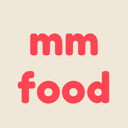Yeast Extract Uncovered: Gluten or MSG in Your Meal?
Unpacking yeast extract: Is it hiding gluten or acting like MSG? Learn how it affects gluten-free and MSG-sensitive diets, with practical tips for safe dining.
MM Food Team

Dine Confidently Anywhere
Get the MM Food app for instant menu translation and allergy detection.
Yeast Extract Uncovered: Gluten or MSG in Your Meal?
Navigating menus with dietary restrictions is challenging enough without puzzling over ambiguous ingredients like yeast extract. Found in sauces, soups, snacks, and processed dishes, this common flavor enhancer raises two critical questions: Is yeast extract a hidden gluten source? And is it just another name for MSG? Let's clarify the facts so you can dine with confidence.
What Exactly Is Yeast Extract?
Yeast extract is a savory paste or powder made by breaking down yeast cells. It’s rich in glutamates — compounds responsible for umami flavor — and acts as a natural alternative to artificial additives. While it's generally considered safe, its production sources and composition can affect those with dietary sensitivities.
The Gluten Question: Is Yeast Extract Safe for Celiacs?
Historically, yeast extract was derived from brewer’s yeast grown on barley (a gluten-containing grain), posing risks for those with celiac disease. However, most modern yeast extract is produced from sugar beet or sugarcane molasses, making it inherently gluten-free. That said, contamination remains possible:
- Manufacturing Cross-Contact: Facilities processing wheat-based products may introduce trace gluten.
- Barley-Derived Variants: Some specialty products still use traditional methods.
Verdict: While often gluten-free, check labels for certifications like "certified gluten-free" or verify with staff. Never assume safety without confirmation!
The MSG Debate: Does Yeast Extract Contain Added MSG?
Yeast extract does not contain synthetic MSG, but its natural glutamates behave similarly in the body. When yeast is broken down, it releases glutamate identical to the structure in monosodium glutamate. For those sensitive to MSG, yeast extract can provoke comparable reactions like headaches or nausea due to these naturally present compounds. Key Takeaway: Though not "added MSG," it may affect MSG-sensitive diners. If avoiding glutamates, treat yeast extract with caution.
How the mm food App Simplifies Your Safety
Don’t gamble with ambiguous ingredients. The mm food app scans menus in real-time to identify potential risks:
- Instant Translation: Decipher foreign-language dishes effortlessly.
- Smart Dietary Filtering: Set "gluten-free" or "low-MSG" preferences. Our AI cross-references yeast extract listings against your profile, flagging high-risk items based on preparation methods and regional sourcing trends.
- Contextual Analysis: We distinguish between contamination risks and inherently safe options, empowering informed choices.
Practical Tips for Dining Out
- Ask Critical Questions: Is yeast extract barley-derived? Was it produced alongside gluten?
- Seek Certifications: Look for GFCO (gluten-free) labels on packaged ingredients.
- Monitor Symptoms: Track reactions to isolate triggers via our app's food journal feature.
Knowledge transforms dining anxiety into empowerment. With mm food, hidden ingredients become visible obstacles — easily navigated for safer, stress-free meals.

Dine Confidently Anywhere
Get the MM Food app for instant menu translation and allergy detection.